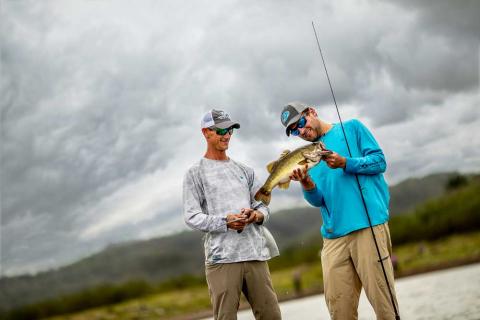Heath Wood
When Michael Jordan hit the game-winning jumper over Bryon Russell in the 1998 NBA Finals, people often forgot that Jordan's team was losing before the shot. In Super Bowl XXIII, Joe Montana threw a pass to John Taylor in the back of the end zone to win the Super Bowl. That play is known as "the catch." Again, before Taylor caught the game-winning touchdown, his team was behind. However, one of my favorite sports plays comes from game one of the 1988 World Series. Kirk Gibson comes to bat with two injured knees and hits a game-winning home run to take the series lead. What makes it unique is the Dodgers were trailing by one run, in the bottom of the ninth inning, with two outs.

Hunters can often feel like Gibson with two bad knees during the latter portion of the spring turkey season. When it seems like the odds are stacked against you, and you may end the season without filling your turkey tag, you must go to bat one last time. Your season can end with a home run by never giving up, and no one will remember anything except that you ended it with success.
As with the famous words that the remarkable Joe Dirt once spoke, "You have to keep on keeping on." No matter how challenging the season may be, there is always time for one last shot. Below are three tips for hunting the late season that will have you fist-pumping around the bases like Gibson did when he hit the game-winning home run.

1. Be The Lone Hen
By the end of the spring season, turkeys have been through a lot. By now, most hens have been bred and are laying on the nest, and the toms have been hunted hard and put themselves through demanding tasks that only the breeding season can deliver.
When hunters attempt to call a gobbler into close range during the late season, they must remember to tone down their efforts. At this point in the season, hens will not let out excited yelps every two minutes, nor will you hear them cutting and yelping. The only hens still searching for companionship from a nearby tom are the one or two hens who have not yet been bred. The hens still looking for love are making soft yelps and a few soft clucks and purrs. The hunter must mimic the same vocal strategies that the real hens make when trying to call a gobbler in range.
Gobblers will be call shy during the latter part of the season as well. To get the attention of a nearby tom, instead, use soft calls and call sparingly. The goal is to create curiosity from the gobbler, who thinks he has found one more hen to breed and will come to investigate.

2. Decoys or Not
When a hunter adjusts their calling efforts, it is vital to remember that turkeys, both hens and gobblers in the late season, like to venture off by themselves. Hens tend to their own nest, and gobblers have spent the previous two months fighting with the other toms for dominance and breeding. A typical late-season hunter may wonder if decoys should be used or left at home.
Again, most gobblers and jakes have had their fair share of fights at this point in the season. For that reason, a male decoy should not be used when trying to call a tom into close range. The same goes for a breeding position hen decoy. A breeder decoy is often used with a jake decoy to create jealously. That is not what is happening now, so do not use that decoy scenario. Instead, an alone upright hen or alone feeding hen such as the Avian X LCD Feeder Hen is the better decoy choice if any need to be used. If a hen is going to be out, more than likely she is going to be by herself.
I prefer using a hen decoy during the late season when hunting open fields, where I patiently wait for turkeys to stroll naturally.

3. Get Close Before Calling
One of my favorite tactics for calling turkeys, no matter what portion of the season I hunt, is getting as close to a tom on the roost before making my first call.
Suppose a hunter can get near a gobbler while still on the roost before revealing their location after calling. This scenario gets complicated because getting close to the roost without being seen is virtually impossible during the first part of the season. By getting close before calling, the tom has a least likely chance of being interrupted by other hens or distracted by something that could detour his route to the hunter's location.
During the latter part of the season, the foliage on the trees and underbrush below are in full bloom. A shield of cover has been added for hunters to move through the woods without being seen. Hunters must take advantage of the thick cover and get close to a gobbling tom before making their first calling attempt. Remember, turkeys can become somewhat lazy towards the end of the breeding season. The less traveling they must do to meet up with a hen, the more likely they will come into close range.
Even though the action among turkeys slows down during the final part of the season, the hunter must keep hunting. You never know when it may be the morning that a mature gobbler is fired up and ready to play. If the hunter is there to take advantage of the tom's last desperate attempt on the remaining hens, they too can end the season with a trophy to take back home with them.































